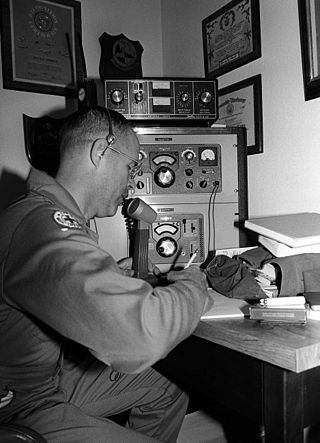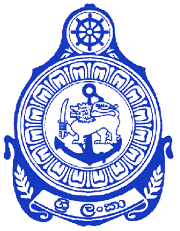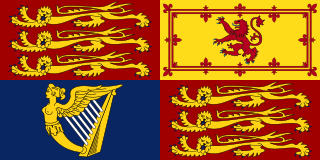
The Netherlands Armed Forces are the military services of the Kingdom of the Netherlands. The core of the armed forces consists of the four service branches: the Royal Netherlands Navy, the Royal Netherlands Army, the Royal Netherlands Air Force and the Royal Netherlands Marechaussee. The service branches are supplemented by various joint support organisations. In addition, local conscript forces exist on the Dutch Caribbean islands of Aruba (AruMil) and Curaçao (CurMil). These operate under the auspices of the Royal Netherlands Navy and the Netherlands Marine Corps. The armed forces are organisationally part of the Ministry of Defence.

The British Armed Forces are the military forces responsible for the defence of the United Kingdom, its Overseas Territories and the Crown Dependencies. They also promote the UK's wider interests, support international peacekeeping efforts and provide humanitarian aid.
Second lieutenant is a junior commissioned officer military rank in many armed forces. The lowest officer rank, it is usually placed below lieutenant or first lieutenant.

The Second Sea Lord and Deputy Chief of Naval Staff is deputy to the First Sea Lord and the second highest-ranking officer to currently serve in the Royal Navy and is responsible for personnel and naval shore establishments. Originally titled Second Naval Lord in 1830, the post was restyled Second Sea Lord in 1904. They are based at Navy Command, Headquarters.
First lieutenant is a commissioned officer military rank in many armed forces; in some forces, it is an appointment.

A military discharge is given when a member of the armed forces is released from their obligation to serve. Each country's military has different types of discharge. They are generally based on whether the persons completed their training and then fully and satisfactorily completed their term of service. Other types of discharge are based on factors such as the quality of their service, whether their service had to be ended prematurely due to humanitarian or medical reasons, whether they had been found to have drug or alcohol dependency issues and whether they were complying with treatment and counseling, and whether they had demerits or punishments for infractions or were convicted of any crimes. These factors affect whether they will be asked or allowed to re-enlist and whether they qualify for benefits after their discharge.
A cadet is a student or trainee, and is typically used in military settings to denote an individual undergoing training to become commissioned officers. Several civilian organisations, including civil aviation groups, maritime organisations, and police services, also designate their trainees as cadets.

Auxiliaries are support personnel that assist the military or police but are organised differently from regular forces. Auxiliary may be military volunteers undertaking support functions or performing certain duties such as garrison troops, usually on a part-time basis. Unlike a military reserve force, an auxiliary force does not necessarily have the same degree of training or ranking structure as regular soldiers, and it may or may not be integrated into a fighting force. Some auxiliaries, however, are militias composed of former active duty military personnel and actually have better training and combat experience than their regular counterparts.

The Royal Navy Police (RNP) is the service police branch of the Royal Navy and Royal Marines. Members of the RNP enforce service law and discipline.

His Majesty's Naval Service is the United Kingdom's naval warfare and maritime service. It consists of the Royal Navy, Royal Marines, Royal Fleet Auxiliary, Royal Naval Reserve, Royal Marines Reserve and Naval Careers Service. The Naval Service as a whole falls under the command of the Navy Board, which is headed by the First Sea Lord. This position is currently held by Admiral Sir Ben Key. The Defence Council delegates administration of the Naval Service to the Admiralty Board, chaired by the Secretary of State for Defence.

These are the official Royal Navy Officer ranks ordered by rank. These ranks are part of the NATO/United Kingdom ranks, including modern and past. Past insignia is in italic.

This is a list of Royal Navy ratings rank insignia.

A military reserve force is a military organization whose members (reservists) have military and civilian occupations. They are not normally kept under arms, and their main role is to be available when their military requires additional manpower. Reserve forces are generally considered part of a permanent standing body of armed forces, and allow a nation to reduce its peacetime military expenditures and maintain a force prepared for war. During peacetime, reservists typically serve part-time alongside a civilian job, although most reserve forces have a significant permanent full-time component as well. Reservists may be deployed for weeks or months-long missions during peacetime to support specific operations. During wartime, reservists may be kept in service for months or years at a time, although typically not for as long as active duty soldiers.

The Sri Lanka Navy (SLN) is the naval arm of the Sri Lanka Armed Forces and is classed as the country's most vital defence force due to its island geography and is responsible for the maritime defence of the Sri Lankan nation and its interests. The role of the Sri Lanka Navy is to conduct operations at sea for the defence of the nation and its interests and conduct prompt and sustainable combat operations at sea in accordance with the national policies.

The Navy Command is the current headquarters body of the Royal Navy, and as of 2012 its major organisational grouping. It is a hybrid, neither a command, nor simply an installation. Royal Navy official writings describe Navy Command Headquarters both as a physical site, on Whale Island, Hampshire, a collective formed of the most senior RN officers, and as a budgetary grouping.

The Naval Reserve is the Primary Reserve component of the Royal Canadian Navy (RCN). The primary mission of the NAVRES is to force generate sailors and teams for Canadian Armed Forces (CAF) operations, including: domestic safety operations as well as security and defence missions, while at the same time supporting the Navy's efforts in connecting with Canadians through the maintenance of a broad national presence.

Head of the Armed Forces is the position of the sovereign of the United Kingdom as commander-in-chief of the British Armed Forces. However, supreme military authority has been delegated by the monarch to the Defence Council of the United Kingdom, a body officially charged with the direction and administration of the Armed Forces.
United Kingdom Special Forces (UKSF) is a directorate comprising the Special Air Service, the Special Boat Service, the Special Reconnaissance Regiment, the Special Forces Support Group, 18 (UKSF) Signal Regiment and the Joint Special Forces Aviation Wing. In British freedom of information law, "special forces" has been defined as "those units of the armed forces of the Crown and the maintenance of whose capabilities is the responsibility of the Director of Special Forces or which are for the time being subject to the operational command of that Director". The Royal Marine Commandos and the Ranger Regiment are special operations–capable forces, but they do not form part of UKSF.

An officer is a person who holds a position of authority as a member of an armed force or uniformed service.

The Naval Recruitment Training Agency (NRTA) originally called the Naval Training Department was first established in 1944 as a department within the Admiralty it underwent numerous name changes until 1 April 1995 as a new agency of the Navy Department of the British Ministry of Defence. Its role was to contribute to the operational capability of the United Kingdom Armed Forces by recruiting to the Naval Service, delivering training to the Defence community it was administered by the Chief Executive (NRTA)/Flag Officer, Training and Recruitment it was abolished in 2005.













